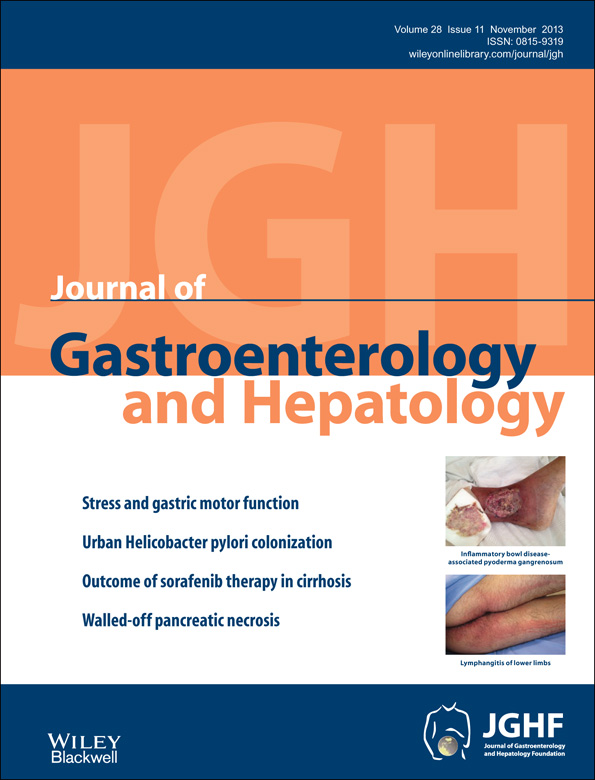Liver fibrosis progression in chronic hepatitis B patients positive for hepatitis B e antigen: A prospective cohort study with paired transient elastography examination
Abstract
Background and Aim
Chronic hepatitis B patients in immune-reactive hepatitis B e antigen (HBeAg)-positive phase may have more rapid progression than those in immune-tolerant phase. We aimed to evaluate the risk of liver fibrosis progression in HBeAg-positive patients at different phases.
Methods
Two hundred forty-seven HBeAg-positive patients without advanced fibrosis at baseline underwent liver stiffness measurement (LSM) by transient elastography in 2006–2008 and again in 2010–2012. Liver fibrosis progression was defined as increase in LSM by 30% or more to levels suggestive of advanced fibrosis at the second assessment.
Results
At baseline, the mean age was 38 ± 11 years, 58% were males, alanine aminotransferase (ALT) was 65 ± 52 IU/L, hepatitis B virus DNA was 4.2 ± 1.2 log IU/mL, and LSM was 6.3 ± 2.1 kPa. At an interval of 42 ± 6 months, 13 patients (5.2%) developed liver fibrosis progression, and 106 patients (42.9%) required antiviral therapy. None of the clinical parameters (e.g. gender, age, ALT, hepatitis B virus DNA, hepatitis B surface antigen level, etc.) was associated with liver fibrosis progression. Among 74 and 137 patients in immune-tolerant and immune-reactive phase, 4.1% and 6.6% had liver fibrosis progression, and 12.2% and 67.2% received antiviral therapy respectively (P = 0.45 and P < 0.001). Immune-tolerant patients with low-normal (< 0.5× upper limit of normal) or high-normal ALT (0.5–1× upper limit of normal) also had similar risk of liver fibrosis progression (5.7% vs 2.6%; P = 0.49).
Conclusions
Liver fibrosis progression is uncommon in HBeAg-positive patients. Patients in immune-reactive phase treated with antiviral therapy did not have increased risk of liver fibrosis progression.




